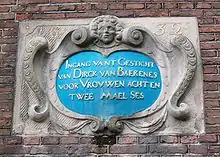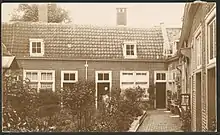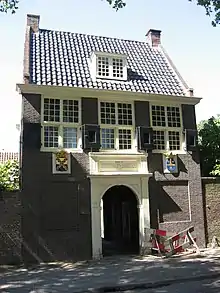Hofje
A hofje (diminutive of 'hof', 'court') is a Dutch word for a courtyard with almshouses around it. Hofjes have existed since the Middle Ages.








A hofje provided housing for elderly people (mostly women). They were privately funded, and served as a form of social security. In the Netherlands there are still a number of hofjes in use.
Hofjes are usually built in a U-shape with a yard or garden in the middle, and a gate as entrance. The shape of hofjes was most likely inspired by the (older) Begijnenhofjes—groups of small houses inhabited exclusively by religious women.
A distinction is usually made between the Begijnenhofjes and 'regular' hofjes. The former were used only by (Catholic) women, who were supporting themselves. They were a kind of cloister. The latter were more charitable institutions.
To be eligible to live in a hofje one had to meet four criteria:
- Sex: almost all hofjes were founded for women, as they could be relied on to keep a household running; although hofjes for men and married couples did exist
- Religion: many hofjes were founded for people of the same faith as the founder (some hofjes were founded by church communities)
- Age: from the 17th century a minimum age was often used. Fifty years was common, and this was an old age in those years
- Social-economic background: hofjes were targeted for poorer people
In the 18th century some hofjes were founded for commercial purposes; the inhabitants would pay rent.
The "Hofje van Mevrouw Van Aerden" in Leerdam is open to visitors as a museum.
Cities with many hofjes in the Netherlands include: